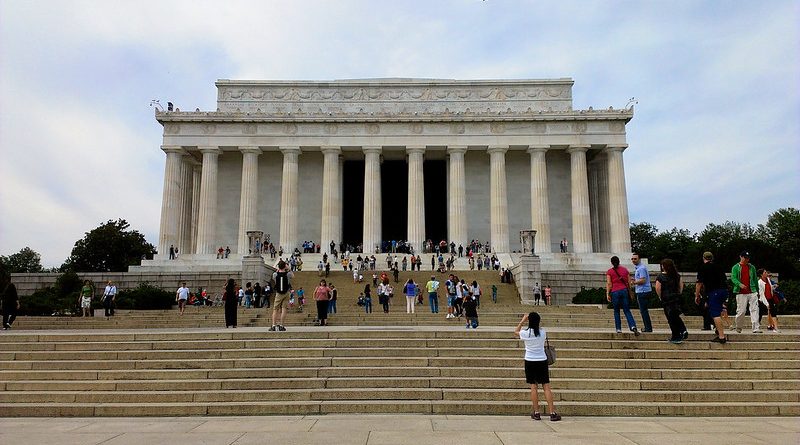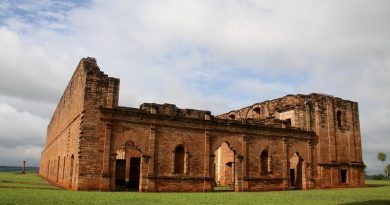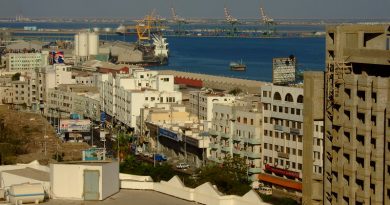The Lincoln Memorial
The Lincoln’s Memorial is the best-loved of all DC’s commemorative structures. Proposals for a monument to the revered sixteenth president were raised as early as his year of assassination in 1865.
Work began on it finally in 1914 by Henry Bacon who erected a bastardised Doric temple and placed within it a seated statue of Lincoln by Daniel Chester French which faces out through the colonnade.
It took 13 years to complete and certainly conveys the ‘mental and physical strength of the great war president’ that he intended; Lincoln grasps the armrests of the throne-like chair and an American flag is draped over the back of the seat.
Climbing the steps to the monument is one of DC’s more profound moments – you eyes meet Lincoln’s gaze and then you turn to look out over the Reflecting Pool and down the length of the Mall. Behind the statue are murals painted by Jules Guerin, representing Fraternity, the Unity of North and South, Charity and Emancipation and Immortality. Under the last two extracts from two of his speeches are carved, the Gettysburg Address (Nov 19, 1863) and his second inaugural address.
The memorial has a strong emotional influence. It’s as much a memorial to the preservation of the Union as to the president himself. On its dedication day in May 1922 the president and his son watched from the speakers’ platform but the man who was to give the principal address, Dr Robert Morton, president of the Tuskegee Institute, was forced to watch from a roped-off area since the crowds were segregated by colour.
From this point on the memorial became a focus for demos for civil rights. Groups ranging from the American Nazi Party to the Black Panthers have exercised their First Amendment rights at the memorial. Its brightest day was the appearance of Dr Martin Luther King Jr who chose the memorial as the place to give his ‘I have a dream’ speech to 200,000 people who gathered here on August 28, 1963.
Destination – Washington DC




